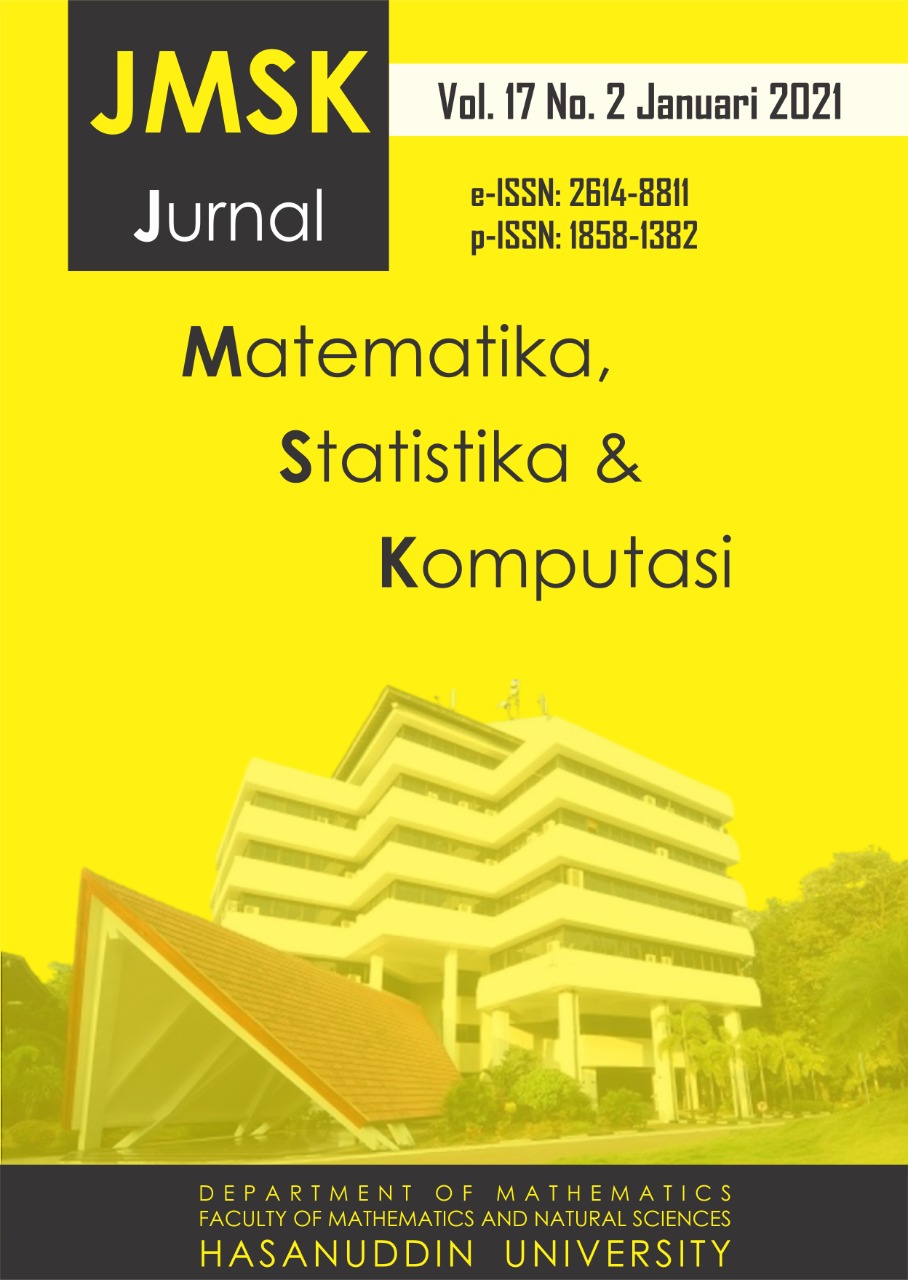MSEICR Fractional Order Mathematical Model of The Spread Hepatitis B
DOI:
https://doi.org/10.20956/jmsk.v17i2.10994Keywords:
Hepatitis B, Fractional orde MSEICR model, Stability analysisAbstract
This research aims to develop the MSEICR model by reviewing fractional orders on the spread of Hepatitis B by administering vaccinations and treatment, and analyzing fractional effects by numerical simulations of the MSEICR mathematical model using the method Grunwald Letnikov. Researchers use qualitative methods to achieve the object of research. The steps are to determine the MSEICR model by reviewing the fractional order, looking for endemic equilibrium points for each non-endemic and endemic equilibrium point, determining the equality of characteristics and eigenvalues of the Jacobian matrix. Next, look for values (Basic Reproductive Numbers), analyze stability around non-endemic and endemic equilibrium points and complete numerical simulations. From the simulation provided, it is known that by giving a fractional alpha value of and , the greater the value of the fractional order parameters used, the movement of the solution graphs is getting closer to the equilibrium point. If given and still endemic, whereas if and the value is increased to non-endemic, then the number of hepatitis B sufferers will disappear.Downloads
References
Angstmann, C. N., Henry, B. I., and McGann A.V (2016). A fractional-Order Infectivity SIR Model, Physica A, vol. 2016, pp. 86–93.
Boyce, W.E. dan R.C. DiPrima. (2009). Elentary differential equation and boundary value problems 9th edition, New York : John Wiley & Sons Inc.
Das, S. dan P.K Gupta. (2011). A Mathematical model on fractional lotka volterra quations. Journal Of Theoretical Biology. 277: 1-6.
Diethelm, K. (2010). The analysis of fractional differential Equations. Berlin : Spinger-Verlag.
Driessche. & Watmough., (2002). Reproduction numbers and sub-threshold endemic equilibria for compartmental models of disease transmission. Mathematical Biosciences. Vol. 2002, No. 180, 29-48.
Huo, H.F.,C. Rui W. Xu-Yang. (2016). Modeling and stability of HIV/AIDS epidemic model with treatment. Applied Mathematical Moduling. Vol 2: 6550-6559.
Jinhong, (2014). Analysis of an SEIR epidemic model with saturated incidence and saturated treatment unction, The Scientific World Journal, Vol.2014:1-11.
Muin, R. M., Toaha, S & Kasbawati (2019). Effect of vaccination and treatment on the MSEICR model of the transmission of hepatitis B virus. J. Phys.: Conf. Ser. 1341062031. doi: 10.1088/1742-6596/1341/6/062031.
Rida, S.Z & Arafa, A.A.M. (2011). New method for solving linear fractional differential equations,” Int. J. Differ. Equations, vol. 2011, p. 814132.
Tri, W., Bayu, P., & Nirmalasari, K. (2005). Pemodelan matematika dan analisis stabilitas dari penularan penyakit gonore. Buletin Ilmiah Mat. Stat. dan Terapannya (Bimaster) Vol. 4, No. 1, 47-56.
Winarno. (2009). Buku Ajar: Analisis Model Dinamika Virus dalam Sel. Semarang: Universitas Negeri Semarang.
World Health Organization, (2019). Hepatitis in the Western Pasific. https://www.who.int/westernpacific/health-topics/hepatitis. diakses pada tanggal 9 Maret 2019.
World Health Organization, (2017). Hepatitis. https://www.afro.who.int/health-topics/hepatitis. diakses pada tanggal 9 Maret 2019.
Downloads
Published
How to Cite
Issue
Section
License
Copyright (c) 2020 Author and publisher

This work is licensed under a Creative Commons Attribution 4.0 International License.

This work is licensed under a Creative Commons Attribution 4.0 International License.
Jurnal Matematika, Statistika dan Komputasi is an Open Access journal, all articles are distributed under the terms of the Creative Commons Attribution License, allowing third parties to copy and redistribute the material in any medium or format, transform, and build upon the material, provided the original work is properly cited and states its license. This license allows authors and readers to use all articles, data sets, graphics and appendices in data mining applications, search engines, web sites, blogs and other platforms by providing appropriate reference.








